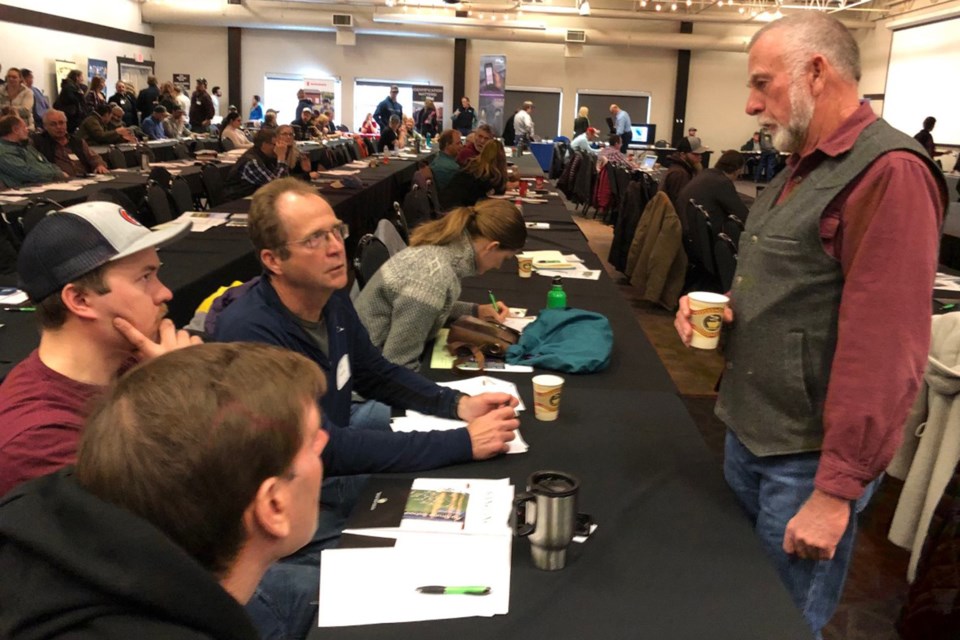OLDS – About 150 people attended the 2020 Ranching Opportunities conference at Olds College's Alumni Centre on Feb. 13.
The conference brought together agriculture experts, producers, educators, students, and others for lectures, break-out sessions, and a producer panel.
One of the speakers at the conference was Jim Gerrish, with American GrazingLands Services out of Patterson, Idaho.
His lecture was entitled What really matters in grazing management.
With 40 years experience in grazing land management, his lecture covered six fundamental strategies:
• Operating at optimal economic and biological carrying capacity.
• Graze with as high a stock density level as practical.
• Leave appropriate post-grazing residual.
• Allow necessary growing time for recovery to positive CHO (carbon hydrate) level.
• Maintain necessary intake level to meet performance requirements.
• Graze as many days of the year as possible.
He explained only four ingredients are necessary for making meat, milk and fibre: CO2, solar energy, water, and soil minerals.
“These are things we can manage for,” said Gerrish. “Grazing management should be a balancing ecosystem process, not manipulating.
“Grazing managing is about working directly with ecosystems. Management is what is intensified, not grazing.”
He spoke about the role of time in a grazing cycle, which is the duration of time a piece of pasture is exposed.
“The shorter the duration of the grazing period, the sooner the pasture begins recovery. Get those grazing periods shorter, shorter, shorter,” he said.
He spoke about stocking rate, which is the number and size of animals on a pasture, and whether overstocking and overgrazing are the same thing.
Overstocking is having more animals than the resource will bear, and overgrazing is allowing animals to bite a plant that is in a negative CHO balance.
Overgrazing occurs when animals are kept on the pasture too long and returning to a pasture before plants have reached a positive CHO balance.
"Overgrazing can occur on a pasture that is understocked,” he said.
He explained that carrying capacity of pasture is determined by four factors: forage production, seasonal utilization rate, daily intake, and length of the grazing season.
“As we make the grazing allotment smaller, stock density increases,” he said. “As we make the grazing allotment smaller, the time of occupancy decreases. Stock density is a function of time. Management of time is the most critical component of grazing management.”
He explained that animal performance is determined by daily forage intake such as time spent grazing, biting rate, size of the bite, and nutrient density such as protein, minerals, vitamins and other factors.
Gerrish answered a number of questions from audience members following his 60-minute lecture.
Other speakers at the conference included Kimberly Cornish, Dr. Rebecca Husted, Markus Webber, Dylan Biggs, and producer panel members Morrie Goetjen, Murray Glimsdale and Jerry Baerg. There was also a well-attended trade fair.
Conference sponsors included Mountain View County, M.D.of Bighorn, Clearwater County, Red-Bow Agricultural Partnership, Kneehill County, Red Deer County, Rocky View County, Wheatland County, Alberta Agriculture, Cows & Fish, Foothills Forage and Grazing Association, Grey Wooded Forage Association, and Olds College.



